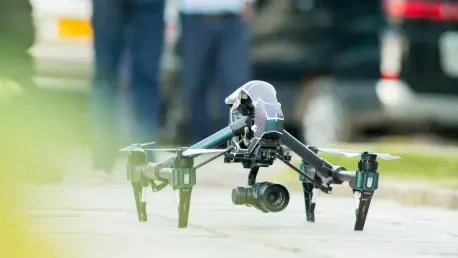In a landscape of rapid technological advancements and fluctuating market dynamics, the case of Hong Kong Robotics offers a compelling glimpse into the complexities of capitalizing on investor enthusiasm while grappling with financial instability. Emerging from relative obscurity, this company has seen its stock price surge dramatically following a strategic pivot into the robotics realm through a notable joint venture with Dataa Robotics, positioning Hong Kong Robotics amid the burgeoning interest in technological innovation. Yet, despite this initial success on paper, the company faces significant challenges that threaten to undermine its long-term sustainability and credibility.
The Rise in Stock Value and Strategic Moves
Rebranding and Leveraging Market Trends
Having shifted its focus from being a multifaceted enterprise under the name China Best Group to a dedicated player in the robotics sector, Hong Kong Robotics has crafted a narrative that appeals to market trends and investor interest. The ambitious rebranding aligns with a growing global fascination for robotics technology, particularly humanoid robots. By partnering with Dataa Robotics—an enterprise associated with industry heavyweights such as SoftBank—Hong Kong Robotics has effectively positioned itself to be a beneficiary of current market waves.
This transformation is reflected in a spectacular increase in stock valuation, which has soared more than sixfold within a short span. Such a rise speaks to a common investor trait: enthusiasm for new technological frontiers, even when based on speculative or nascent market capabilities. The success story is bolstered by similar trends seen among other robotics firms like Ubtech Robotics and Dobot, highlighting shared investor optimism across the robotics sector, where the line between potential and reality often blurs, leading to significant market forecasts and sometimes volatile stock movements.
The Role of Dataa Robotics in Perceived Success
Central to Hong Kong Robotics’ ascent is the strategic collaboration with Dataa Robotics, renowned for its innovative products in robotics technology development. Dataa Robotics represents more than just another partner; it embodies the blend of innovation and promise that Hong Kong Robotics is attempting to leverage. Previously a formidable player in the industry, Dataa’s historical achievements and connections to industry giants lend credibility to Hong Kong Robotics’ new direction.
Yet, this partnership is not free from complexities. Dataa Robotics has encountered its share of operational and financial hurdles, exacerbated by regulatory and financial strains. For instance, blacklisting by the U.S. Department of Commerce, coupled with internal financial challenges, has significantly impacted its operations. These issues not only affect Dataa but could potentially influence the trajectory of Hong Kong Robotics. The partnership raises questions about shared vulnerabilities and the true extent of Dataa’s current contributions to the joint venture. While the prospect of technological breakthroughs is tantalizing, it also involves navigating a precarious path amid regulatory and financial uncertainties.
Financial Hurdles and Sustainability Concerns
Persisting Financial Losses
The financial backdrop against which Hong Kong Robotics operates presents stark challenges that contrast sharply with its stock market triumphs. At a glance, the company has not demonstrated profitability, marking a trend of fiscal underperformance over consecutive years. A 45.6% drop in revenue to HK$116 million, coupled with a widened loss of HK$138 million for the fiscal year ending in March, underscores the disconnect between market perception and actual financial health.
This financial strain is emblematic of deeper issues, including significant impairment losses that cast doubt on the company’s strategic prowess and fiscal discipline. Past endeavors spanning geothermal energy to real estate have not yielded profitable outcomes, raising concerns about strategic consistency and execution. Such diverse but often unsuccessful ventures might signal misalignment in long-term vision, further entrenching doubts about its current foray into robotics.
The Capital-Intensive Nature of Robotics
The broader context of the robotics industry, particularly humanoid robotics, reveals it to be inherently capital-intensive. Research and development, a cornerstone of technological innovation, require robust financial backing. Hong Kong Robotics faces the dual challenge of sustaining high liquidity for research and development while addressing uncertain market demands. In this setting, the HK$50 million in cash reserves reported at the end of March appears precariously inadequate to support the scope of innovation and market entry the company envisions.
Moreover, the industry itself is characterized by its fast-paced changes and competitive pressures that demand not just financial endurance but also strategic adaptability. The uptake of robotics technology is undoubted, but reaching profitability within such a complex framework requires a confluence of innovative capacity and an ample financial runway. The existing financial trajectory and low liquidity suggest that Hong Kong Robotics must either rapidly find additional financing or temper its ambitions.
Future Prospects and Strategic Considerations
Harnessing Market Enthusiasm and Strategic Ties
Positioned against these hurdles, Hong Kong Robotics stands at a crucial juncture where market enthusiasm must be judiciously harnessed to ensure a sustainable footprint. The robotics market, with its potential for transforming industries, presents exciting opportunities but also demands strategic foresight and robust planning. The existing cooperation agreements offer some avenues for growth and diversification beyond immediate local markets.
However, the reliance on a single partner in Dataa Robotics, itself marred by challenges, necessitates a broader strategic scope. Contemplating additional partnerships, diversifying technological offerings, and seeking out global market entry could form viable parts of an adaptive strategy. Ensuring a steady inflow of both capital and innovative capacity will likely determine long-term success in this volatile industry.
Balancing Optimism with Realistic Strategy
In today’s rapidly evolving technological landscape and turbulent market conditions, Hong Kong Robotics stands as a prime example of the complexities involved in leveraging investor interest while contending with financial instability. Initially a relatively unknown entity, the company saw its stock price soar due to a strategic shift into the robotics sector. This transformation was facilitated by a significant joint venture with Dataa Robotics, positioning the company at the forefront of growing excitement around technological advancement. Despite these early successes that looked promising on paper, Hong Kong Robotics now confronts substantial hurdles that could jeopardize its long-term viability and credibility in the industry. The initial boost in investor confidence was largely due to the company’s innovative direction, but maintaining this momentum requires navigating financial and operational challenges—issues crucial for ensuring they can sustain growth and continue to appeal to investors while expanding their foothold in the technological realm.









